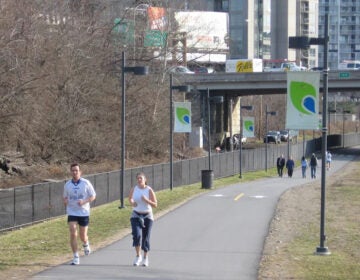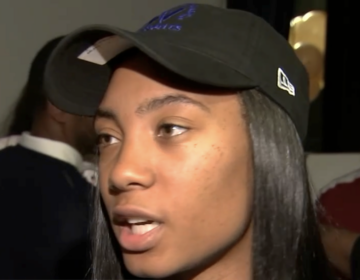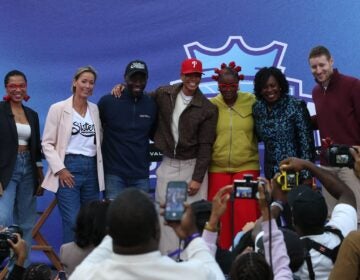Suburban Philadelphia skaters find community in roller derby: ‘The harder you hit them, the more you love them’
Somewhere behind the bruises and collisions, skaters in Bucks, Chester and Montgomery counties find acceptance in the full-contact sport.
From Delco to Chesco and Montco to Bucks, what about life in Philly’s suburbs do you want WHYY News to cover? Let us know!
Women donning helmets, mouth guards and pads roller skate counterclockwise inside Inline309 at blink-and-you’ll-miss-it speeds, weaving and crashing into one another with precise abandon.
The sounds of the collisions, constant shouting, heavy breathing and polyurethane wheels changing directions echo inside of the climate controlled rink in Hatfield, Pennsylvania. Yet, rules confine skaters to a small oval-shaped track, adding a layer of claustrophobia to the mix.
It’s just another sweaty, weekday night of Bux-Mont Roller Derby practice in Hatfield. The physicality of the sport and the resulting bruises would be enough to scare most people away.
But for roller derby fanatics and players alike, the full-contact sport is a welcoming sanctuary that is increasingly attracting more members in the Greater Philadelphia area.
“We’re a safe space for a lot of folks from a lot of different walks of life, and everybody’s welcome in our space, 100%,” said Alana Deluca, who on the track goes by her derby name, “Liberty Violence,” or “Libby” for short. “I think now more than ever, that message is really hitting home for a lot of people. And whether it’s on or off skates, there’s a spot for everybody in derby.”
Or as Kristin Janifer, derby name “Blocka Kahn,” puts it: “Who doesn’t want to be a badass on skates?”
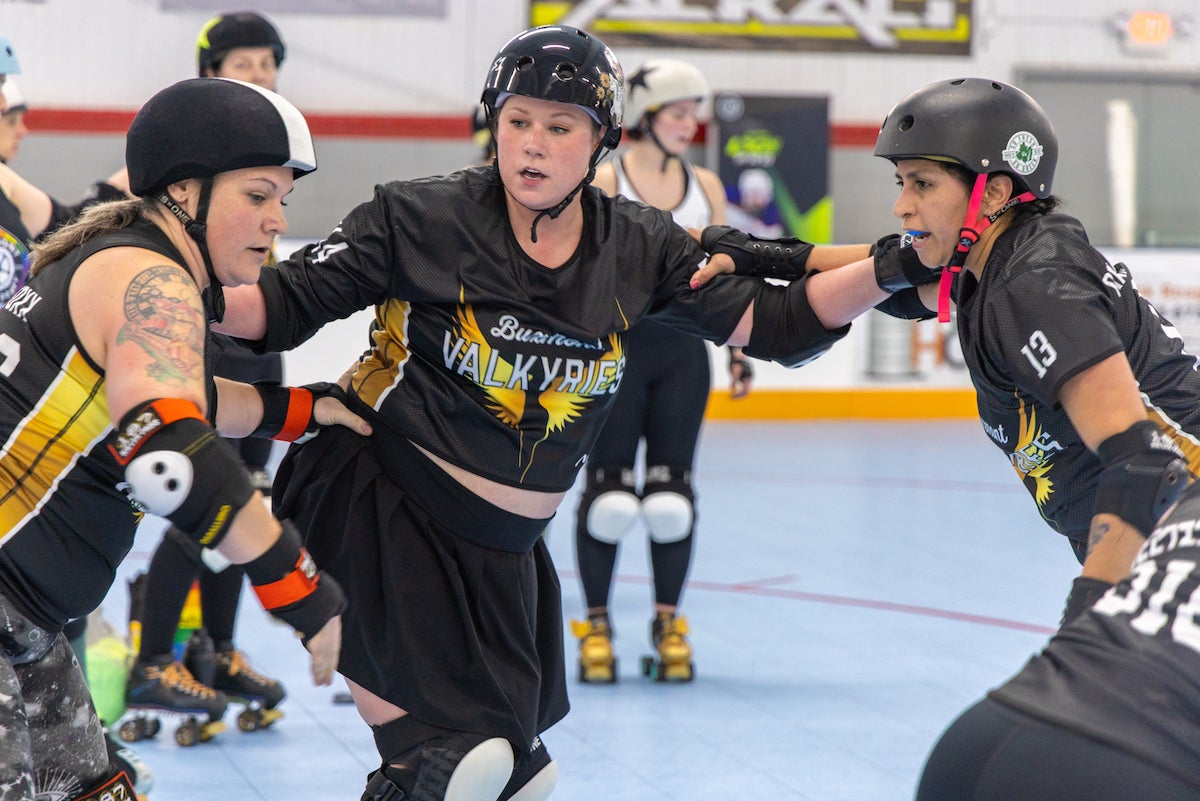
‘An outlaw thing’: Roller derby’s long history
Born during the Great Depression, roller derby is nearly a century old. Event promoter Leo Seltzer read in a magazine article that more than 90% of Americans had roller skated at some point in their lives. He decided to launch a new sport on Aug. 13, 1935, in which teams of male and female skaters circled a flat track, ticking off laps until the first team to skate the approximately 2,700 miles from the East to the West Coast claimed victory.
By 1938, Seltzer and sportswriter Damon Runyon had refashioned roller derby into something faster, tougher and more dramatic, implementing the rules and regulations that remain the backbone of roller derby today.
“The basic appeal,” Seltzer told The New York Times in 1971, “is noise, color, body contact … The underground press calls us ‘the people’s game.’ We’ve gotten a kind of ‘in’ following as an outlaw thing.”
The sport rode a wave of popularity in the 1940s, with some bouts even broadcast nationally on ABC. In 1959 Seltzer’s son, Jerry Seltzer, took over running the league as the sport experienced a dip in attention. The younger Seltzer brought more fans to the sport by seeking to heighten the drama and theatrics: The show was just as important as who won or lost the bout, which, in some cases, may have been rigged.
In May 1973, more than 27,000 fans filled Shea Stadium in New York City to watch the world championships. But the sport’s popularity started to decline by the mid-70s, after Jerry Seltzer sold the league rights to a different league, and roller derby’s momentum sputtered.
The sport’s latest comeback wave sprung up in Austin, Texas, in the early aughts. The Women’s Flat Track Derby Association, or WFTDA, was founded as the United Leagues Coalition in 2004. WFTDA now serves as the international governing body for women’s flat track roller derby, and counts more than 400 member leagues on six continents.
The main objective of roller derby is to score points, explained Jennifer Ratkowski, derby name “Emma Degenerate,” known as “Rat,” of Brandywine Roller Derby in Exton.
In a roller derby “bout,” or match, five players from each team are on the track. Each team has one jammer, who tries to lap the other team to score, and four blockers, who are tasked with blocking the opponent’s jammer and also trying to make way for their own jammer to get through. A jammer scores a point each time they get their hips past the hips of one of the opposing blockers, so “every time you go around, you have the possibility of scoring four points,” Ratkowski said.
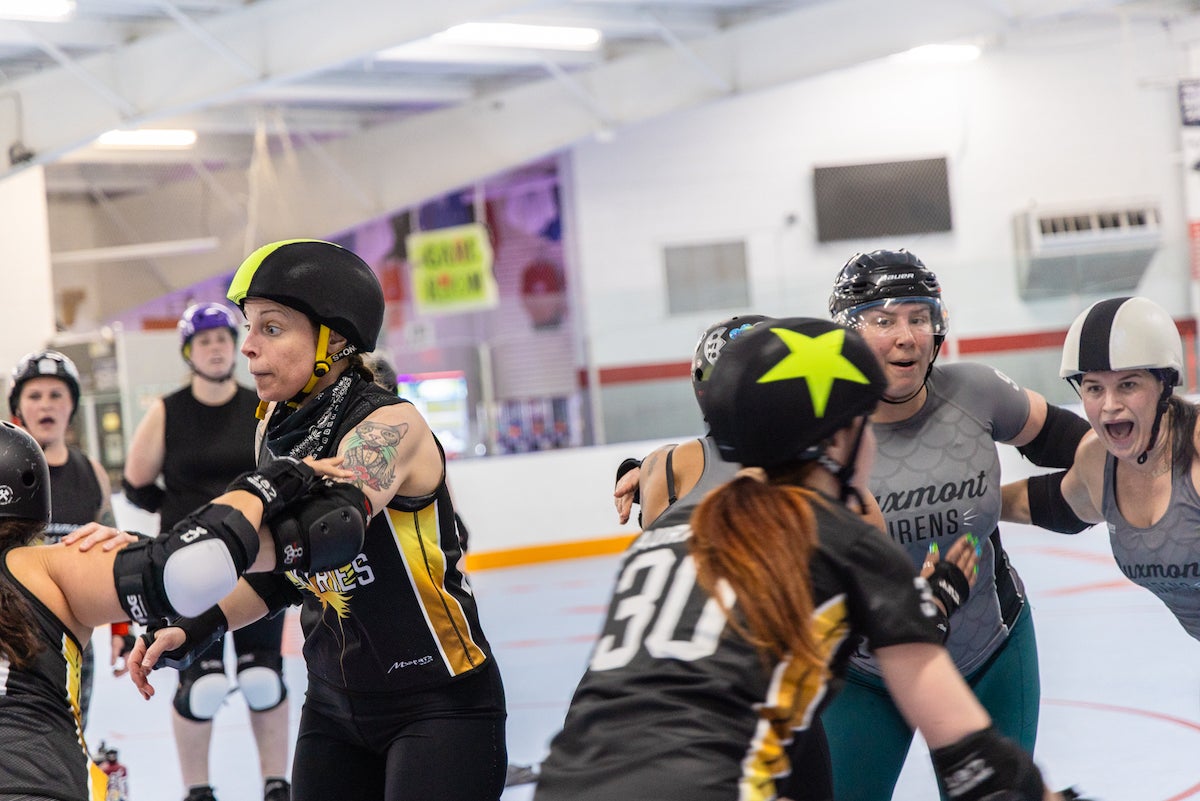
Each round, known as a “jam,” lasts two minutes, with both teams’ jammers trying to get out in front once it starts to be named as lead jammer.
Blockers have to both help their jammer and prevent the opponent’s jammer from breaking through their wall of bodies.
“We’re playing offense and defense at the very same time, which is different from a lot of sports,” Ratkowski said.
For an outsider, roller derby is like “a game of Red Rover while on wheels,” or even “a mosh pit,” said Connie Przeslawski, also of Brandywine Roller Derby, whose derby name is “Iron Butterfly,” or “Butters,” for short.
“It’s very chaotic, it’s insanity. It’s kind of like watching football for the first time,” she said. “You’re just going, ‘Oh my goodness, what is happening?”
But for the initiated, other layers of the game soon become clear, Przeslawski said.
“As you spend more and more time immersed in the sport, it becomes … a very strategic, a very advanced sport that requires a lot of thought and a lot of strategy,” she said.
Certain rules and regulations have changed since roller derby first started: Punching and kicking are banned, and contact with the helmet or below the knee is not permitted. And most leagues are volunteer-run, with players and other members and fans pouring in hours of their time to organize bouts, fundraise for travel to competitions, advertise for new skaters and more.
The latest roller derby resurgence has also brought with it a new twist: Players now create a “derby name” using puns and cultural references, a tradition that has its roots in Austin’s punk and drag scenes.
But the sport’s tough-minded ethos remains.
“The love that you get playing other teams, like, the harder you hit them, the more that you love them,” Janifer, of Bux-Mont Roller Derby, said.
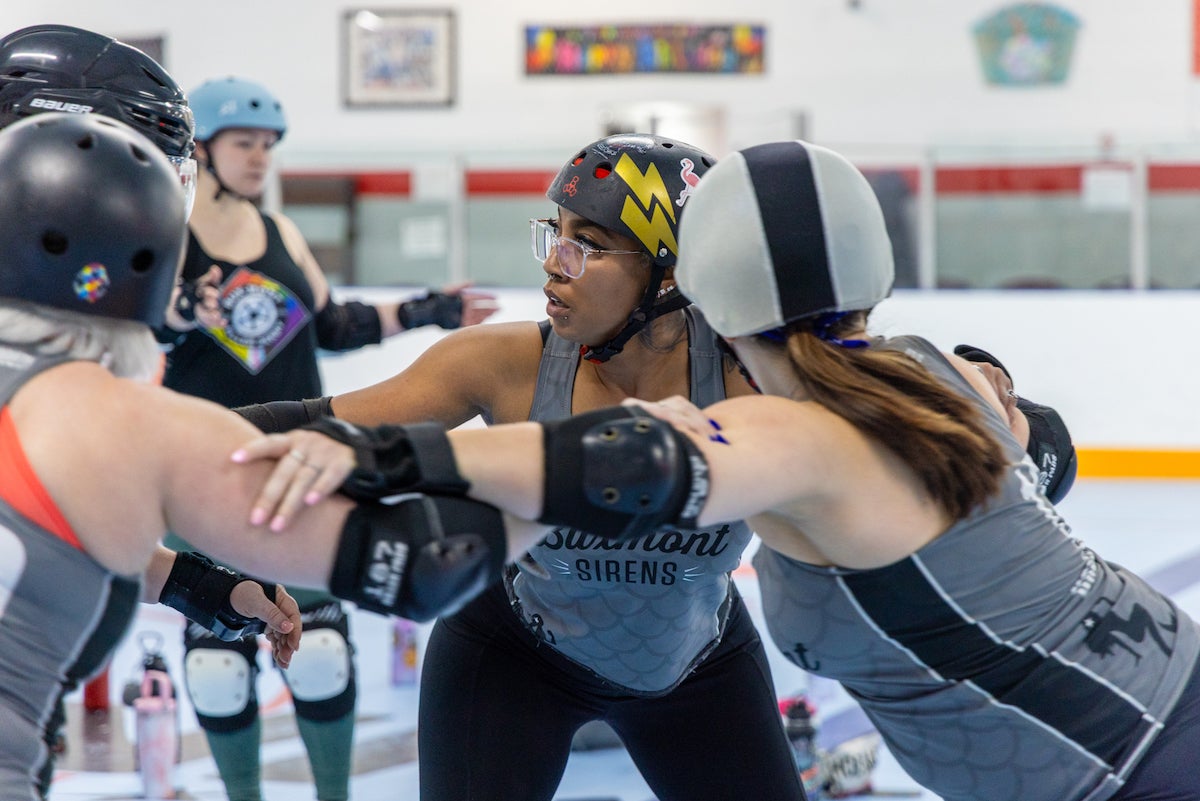
Rise in popularity in the ‘burbs
Ratkowski recalled watching the movie “Whip It” with her husband in their home in Mont Clare, right outside of Phoenixville. The film showcases a fictional roller derby team.
“I was like, ‘I could totally do that,’” Ratkowski said. “My husband laughed at me. And I was like, ‘No, seriously, I used to skate when I was a kid, I’m cool.’”
The mother of two and health care claim analytics worker immediately started Googling leagues near her.
“I needed something for myself, something that I could kind of carve out into the world,” she said. “At that point, I was, I worked full-time, and I was a mom, and I felt like that was kind of my only identity. And when I found this and started doing this, it really was like a love-at-first-go kind of thing. I put skates on, and I was skating around with these people who are super encouraging, and they want you to do well, because they know what it’s like to do well, and that’s what drew me to it initially — and what keeps me coming back.”
Ratkowski joined Brandywine Roller Derby in 2011. The league currently boasts 12 dues-paying members and even more people in its new skater program.
Their temporary practice space is tucked away behind Collegium Charter School in Exton. Within a climate controlled, tent-like structure nearly two dozen people skate across 425 black panels. The track is outlined in red and yellow tape.
Zy Brandt, who goes by the derby name Starchild and is president of the club, went to an open skate in Pottstown two years ago and decided to check out Brandywine Roller Derby.
“Showed up and just immediately fell in love with every aspect of it,” they said. “Now, I feel more comfortable on skates than I do on my feet.”
They want to foster a welcoming environment for everybody. It’s not uncommon, at Brandywine or in any roller derby league, for players to clap when new members fall down as they wobble around their first trips around the track.
“So it doesn’t matter that you’re not doing perfect,” they said. “You’re doing a little better, and you’re clearly putting the effort in. And there’s just so much of that energy of like, we don’t care if you’re the best. Honestly, we don’t even care if you’re good. Are you trying and are you having fun? That’s all that matters, and it’s just such a great environment to grow and exist in.”
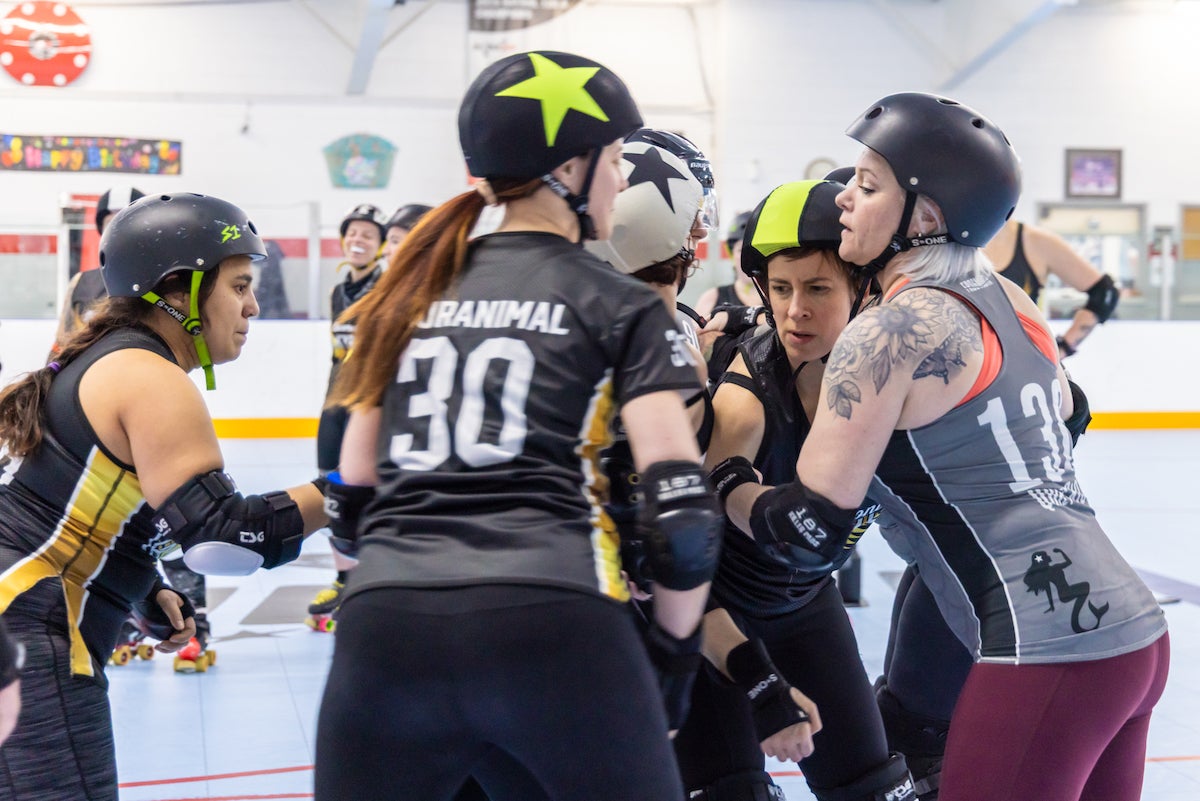
Ratkowski said the sport is also a welcoming space for a wide range of body types and athleticism.
“What I consider to be special about the sport is that you can be any type of person,” she said. “I watch a lot of football, right? Like the [offensive] line, for example, they’re big, big people, right? You can be a big person and play derby. You can be a little person and play derby … If you have skills and you work hard, you can be successful at this sport. And I think that’s what’s really great about it, is that you’re sitting at home and you’re thinking to yourself, ‘Okay, yeah, I can totally do that.’ You can totally do that. And we will teach you how to do that.”
The pandemic put the growth of Brandywine Roller Derby on hold for three years, stunting membership and leaving the club stranded. But now, Brandywine Roller Derby is on an upwards trajectory as they look for a permanent home.
“Roller derby is just a really great time. And so I think if you’re here to have a good time and that’s what you want to do, I think that you’ll find a community, and through the community, you guys can grow together,” Ratkowski said.
Brandywine wasn’t the only roller derby league hit hard by the pandemic. Deluca of Bux-Mont said the bigger league, which has between 40 and 45 active skaters, ranked in the top 100 of WFTDA teams in the northeast region.
“With COVID, this is a sport that absolutely could have been completely decimated and not have come back, but it’s a real testament to the leagues that found ways to stay together and stay connected and as soon as it was safe to come back and do contact again, they did it and we’re seeing a another growth post-COVID within the sport overall,” she said. “The inclusivity of our community, that’s a big draw.”
A legacy of inclusion
From the beginning, roller derby included co-ed teams, and creator Leo Seltzer billed it as a sport with gender parity. While men and women only played against each other in jams, they competed by the same rules and for the same amount of time. Women’s salaries still lagged behind their male counterparts, but women roller derby players were among the highest paid female athletes in the sport’s heyday.
“This is the only American sport ever created where men and women are equal,” Seltzer told The New York Times in 1971. “The women can see themselves in the roller derby. If she’s got resentments against her father, her husband, kids or the grocery man, she can get rid of them at the roller derby.”
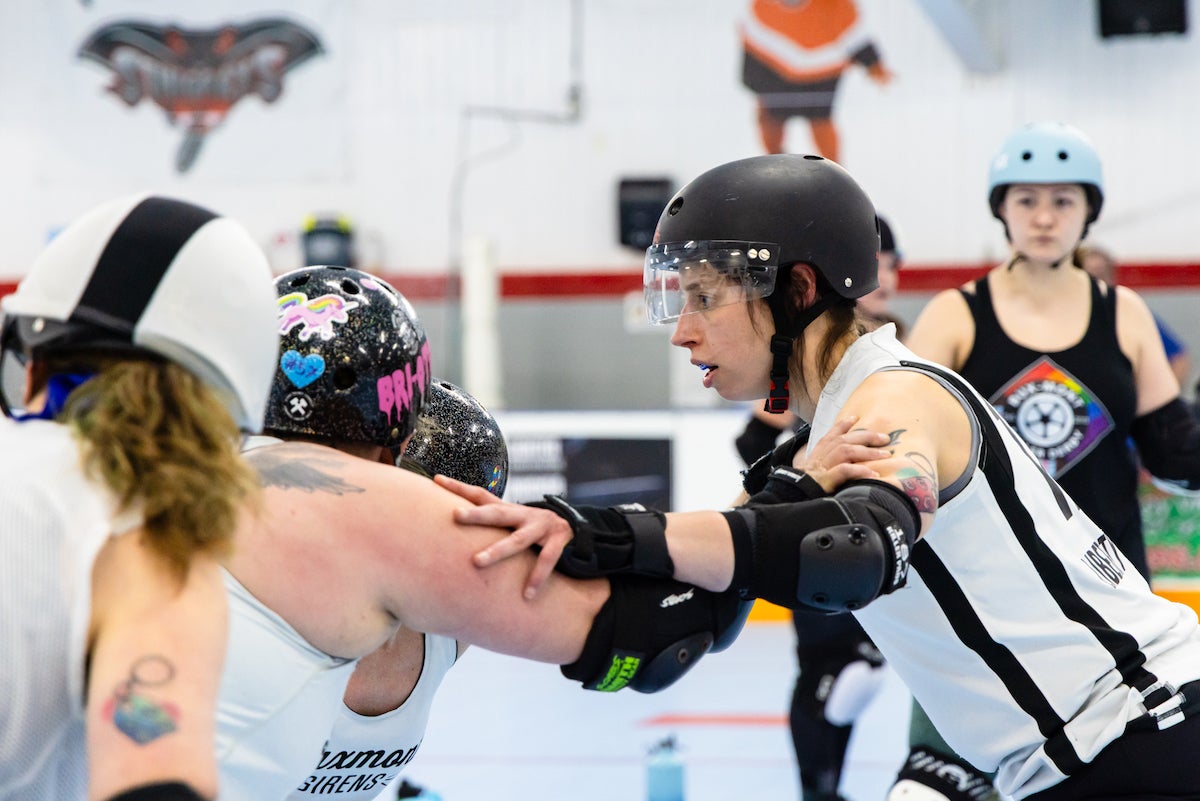
In the sport’s new iteration, the focus on gender equality and inclusion remains.
Brandywine Roller Derby first began as the Brandywine Roller Girls in 2010, but the club changed its name to Brandywine Roller Derby to be more inclusive to all members. In 2019, the league opened up its doors to all genders.
A commitment to be “accepting of queer communities” is a core part of the league’s identity, said Brandywine Roller Derby player Rachael Gable, whose derby name is “The Texorcist.”
“We are going to provide that safe space for people to improve their athleticism, first and foremost, but especially for our trans communities, our nonbinary communities, we’re here for you,” Gable said. “And even if you can’t skate, there’s other things that you can do in derby.”
Bux-Mont is not open to all genders, but it is a part of WTFDA, whose gender statement says “any individual of a Marginalized Gender, regardless of presentation or the gender they were assigned at birth, is welcomed and encouraged to participate in the WFTDA in any capacity.”
Marginalized genders, according to WTFDA’s website, include women, inclusive of trans, cis, intersex and gender-expansive women; anyone with “gender identities belong to the trans umbrella”; genderqueer, agender, genderfluid and/or nonbinary people; individuals with culturally-specific genders such as Two-Spirit, and intersex individuals. The league also has a statement on diversity, inclusion and anti-racism.
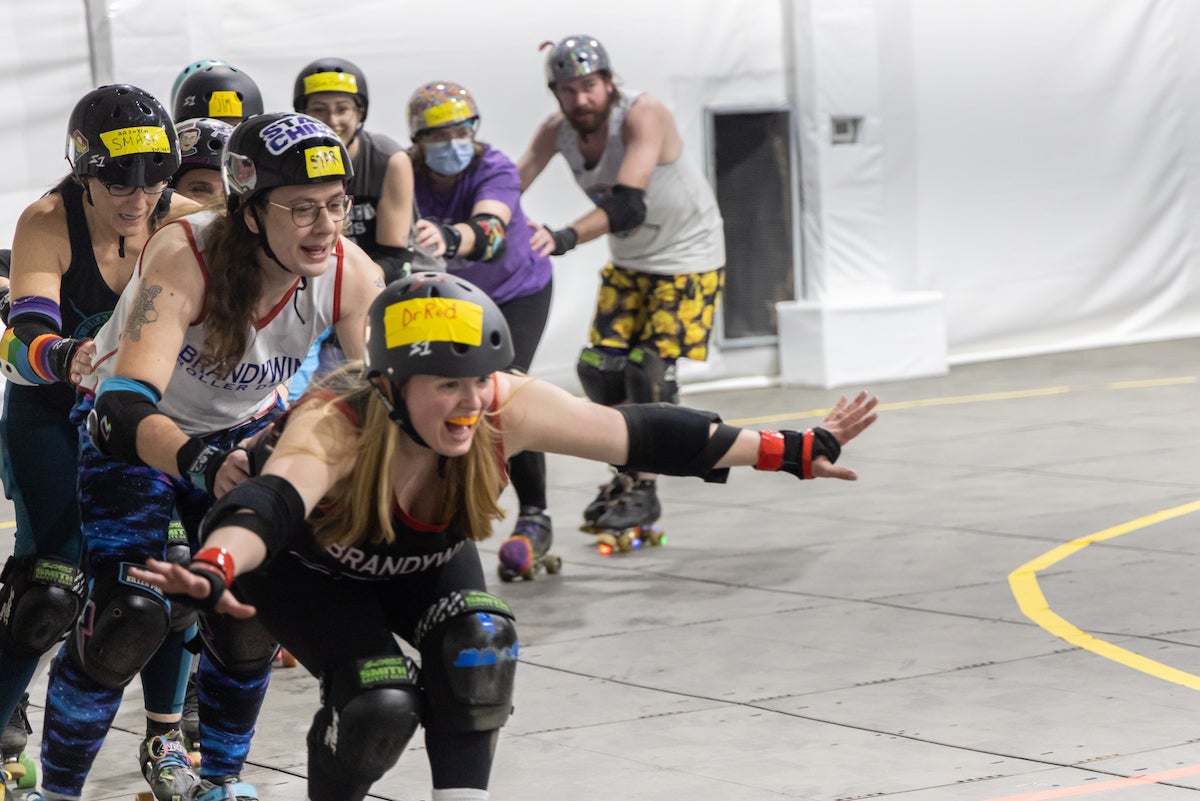
Kim Merkel, derby name “Speed Bump,” vice president of Bux-Mont Roller Derby, said WFTDA is always changing their gender statement in order to be inclusive and up to date.
Merkel said that commitment is all the more important amid threats to diversity, equity and inclusion and anti-LGBTQ actions at the federal level under President Donald Trump’s administration.
“Everybody wants to have a safe space,” she said. “They still want to have a place where they feel like they belong and they can come to and not have to fear or worry. And that’s the most beautiful thing about roller derby. We don’t care who you are, what you are, what you look like, how you dress, what you do. We just want to play the sport and enjoy it and support everybody that comes to be a part of it.”
For many players, the sport provides them with a community and a sense of self that spills into their lives off the track.
Bailey Roussel, derby name “Razzle Dazzle Bazzle,” of Bux-Mont, said she came to the league eight years ago because she was “looking for a sport that gave me that sense of community.”
“I didn’t know anything about the sport, and this team taught me everything I knew,” she said. “And not only that, they built up my own confidence to leave this track and go into my personal life, my professional life, way more prepared to handle anything else that came at me. And every turn that life takes, they’re here building me back up, whether physically or emotionally, and it’s invaluable.”
For Deluca, her derby team members are a “dysfunctional built-in family.”
“They’re there to support you anytime on and off the track, teammates from leagues past, current have been there for me in some of the toughest moments of my life and some of the happiest moments of my life,” she said. “And I wouldn’t trade that for the world.”
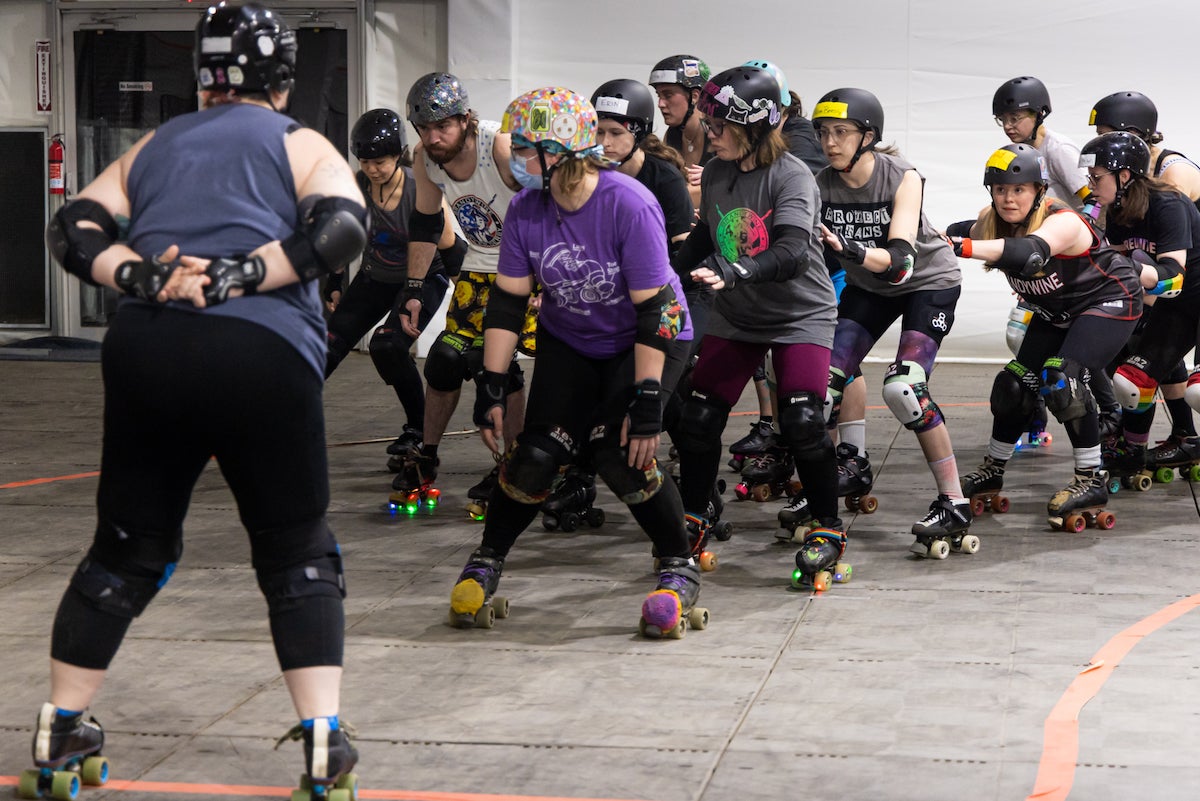

Get daily updates from WHYY News!
WHYY is your source for fact-based, in-depth journalism and information. As a nonprofit organization, we rely on financial support from readers like you. Please give today.


